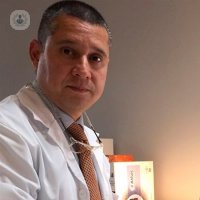Histeroscopia diagnóstica: estudio de la cavidad uterina y posibles patologías ginecológicas
Written by:La histeroscopia consiste en introducir un pequeño sistema rígido dotado de una óptica y una luz a través de la vagina y el cuello uterino. Para llevar a cabo el procedimiento, el especialista en Ginecología y Obstetricia se ayuda de un medio de distención, como una solución fisiológica, con el objetivo de poder valorar mejor la cavidad uterina de la paciente.
Se trata de un estudio de la cavidad uterina y la permeabilidad tubárica con una ecografía transvaginal.

¿Cuándo y cómo se realiza la histeroscopia diagnóstica?
La histeroscopia diagnóstica se realiza en consulta de manera ambulatoria, sin necesidad de dilatación cervical o anestesia, ya que el diámetro del catéter intrauterino es pequeño y lo hace totalmente tolerable. Provoca el mínimo disconfort a la paciente y la conclusión diagnóstica es, en la mayoría de casos, inmediata tras el procedimiento.
¿Cuándo se recomendará una histeroscopia diagnóstica?
El especialista puede requerir de una histeroscopia diagnóstica en las siguientes situaciones:
- Estudio de fertilidad.
- Sospecha de que la paciente puede sufrir alguna patología intravitaria, tales como pólipo endometrial, miomas submucosos, sinequias o síndrome de Asherman
- Sangrado uterino poco normal.
- Biopsia dirigida con visión directa, lo que se recomendará en casos de sospecha de patologías neoplásicas.
- Extracción de un DIU extraviado
- Sospecha de alguna malformación uterina, algo común en mujeres que abortan de forma recurrente.
- Esterilización definitiva por método Essure®
- Recanalización en casos de estenosis cervical



